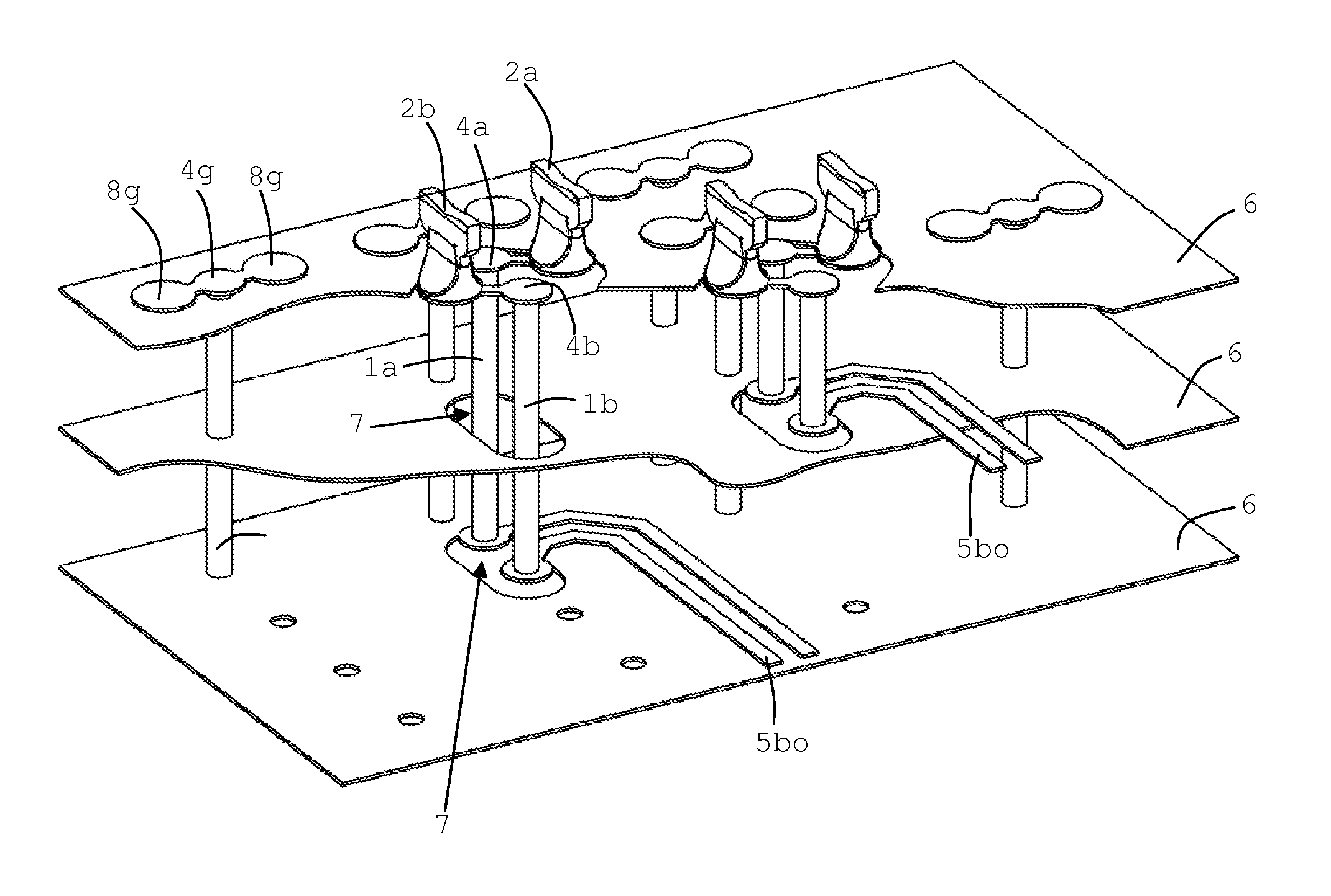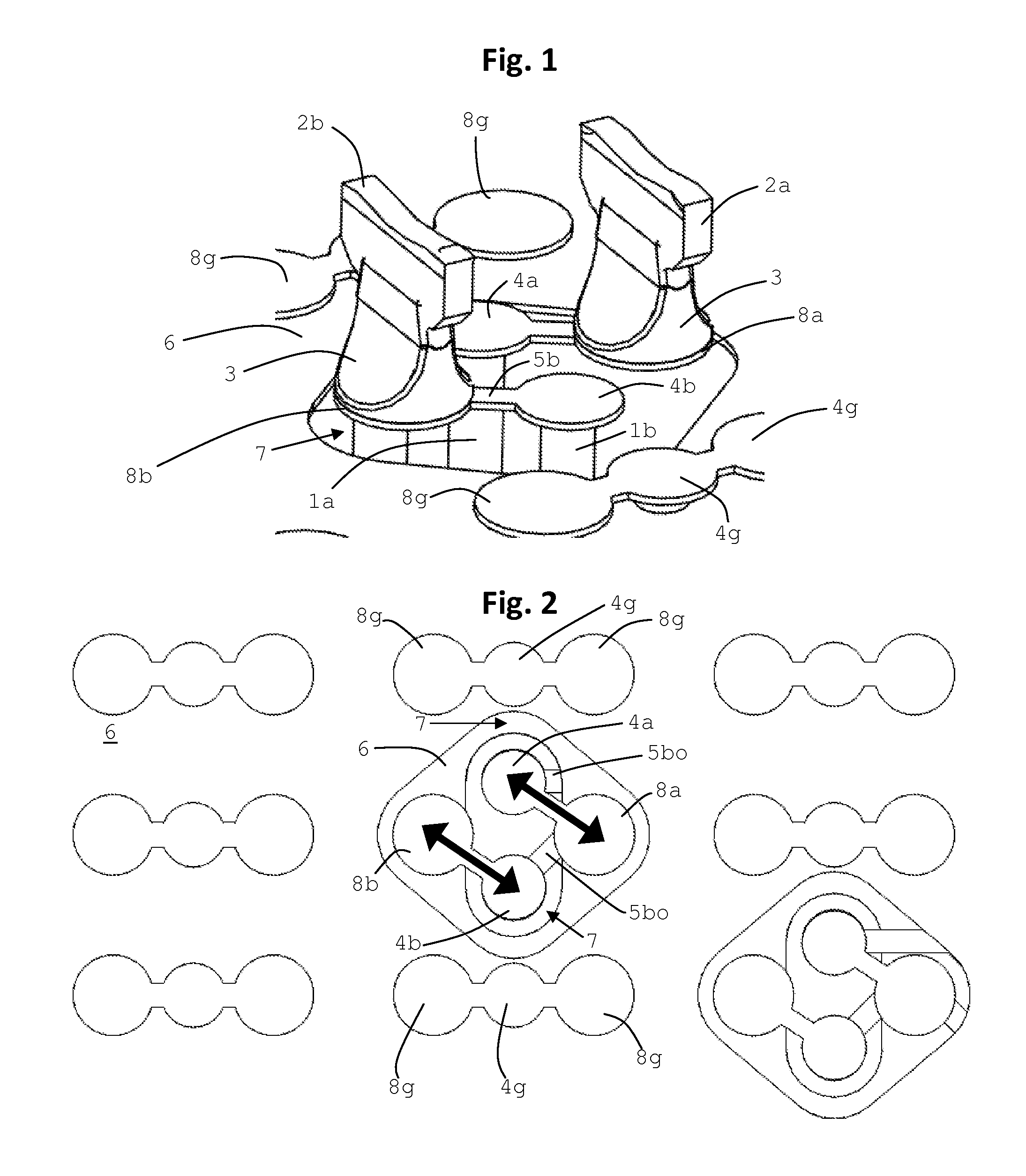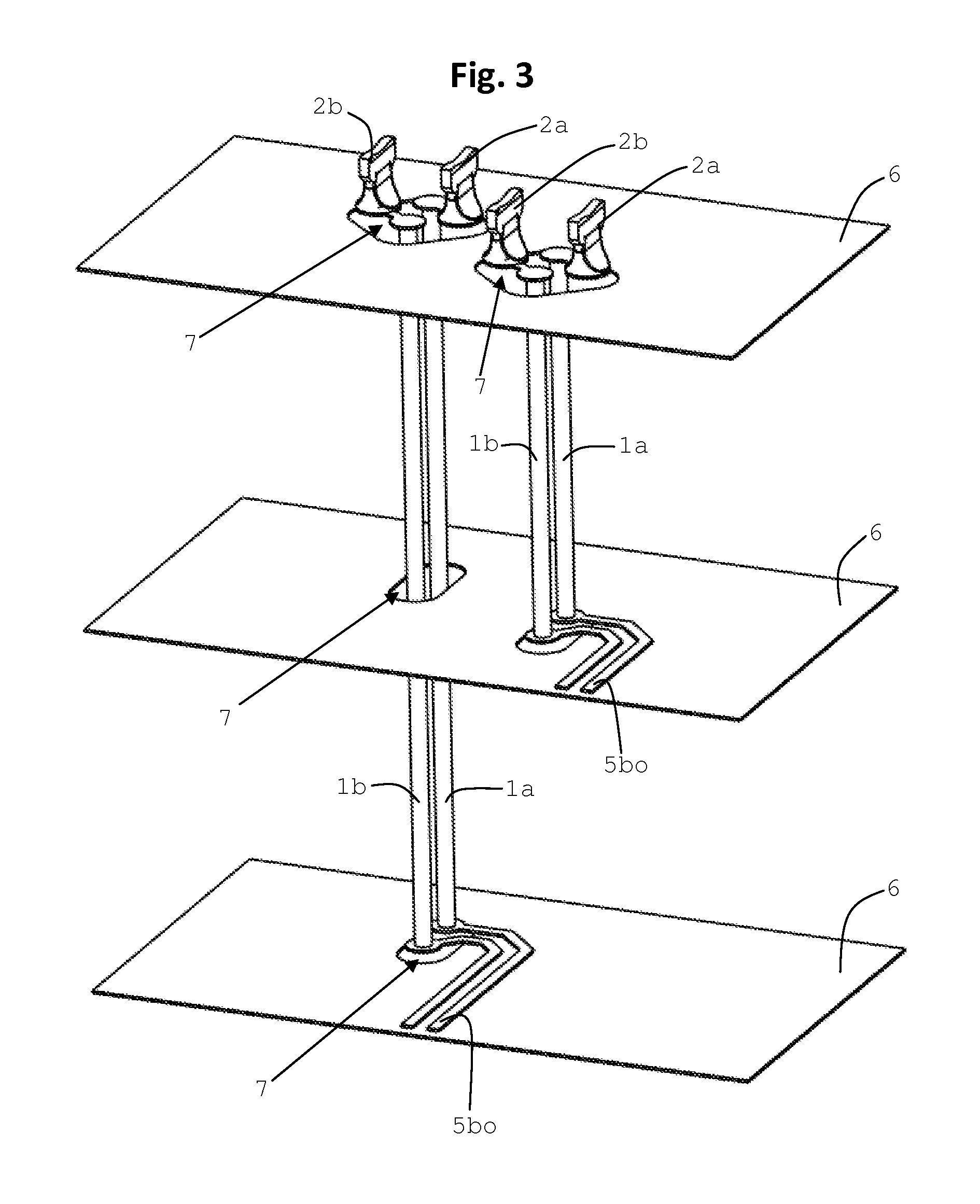Via structure for transmitting differential signals
- Summary
- Abstract
- Description
- Claims
- Application Information
AI Technical Summary
Benefits of technology
Problems solved by technology
Method used
Image
Examples
Embodiment Construction
[0051]FIGS. 1-15 and 23A-25 show preferred embodiments of the present invention. FIGS. 1-15 show via structures according to various preferred embodiments of the present invention. FIGS. 23A-25 show a connector connected to via structure according to a preferred embodiment of the present invention.
[0052]FIG. 1 is a close-up view of contacts 2a, 2b that are arranged as a differential pair. FIG. 2 is a plan view of a six-by-three array of pads 8, in which contacts 8a, 8b are surrounded by contacts 8g. In FIGS. 1 and 2, as well as some of the other figures, certain elements or features are left-out for illustrative purposes. For example, only the conductive portions of the PCB are shown in FIGS. 1 and 2, while the dielectric portions (e.g., layers of FR-4 or other suitable dielectric materials) are not shown. In addition, some the elements or features are exaggerated in some of the figures. For example, the distance between the ground planes 6 in FIG. 3 is exaggerated so that BOR can b...
PUM
 Login to View More
Login to View More Abstract
Description
Claims
Application Information
 Login to View More
Login to View More - R&D
- Intellectual Property
- Life Sciences
- Materials
- Tech Scout
- Unparalleled Data Quality
- Higher Quality Content
- 60% Fewer Hallucinations
Browse by: Latest US Patents, China's latest patents, Technical Efficacy Thesaurus, Application Domain, Technology Topic, Popular Technical Reports.
© 2025 PatSnap. All rights reserved.Legal|Privacy policy|Modern Slavery Act Transparency Statement|Sitemap|About US| Contact US: help@patsnap.com



